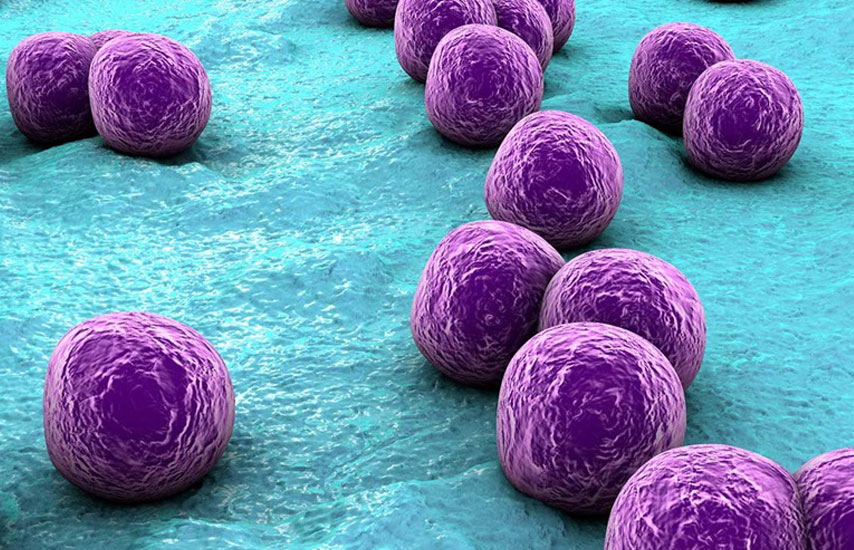- Staphylococcus aureus is the most dangerous of all of the many common staphylococcal bacteria. These gram-positive, sphere-shaped (coccal) bacteria often cause skin infections but can cause pneumonia, heart valve infections, and bone infections.
- These bacteria are spread by having direct sexual contact with an infected person, by using a contaminated object, or by inhaling infected droplets dispersed by sneezing or coughing.
- Skin infections are common, but the bacteria can spread through the bloodstream and infect distant organs.
- Skin infections may cause blisters, abscesses, and redness and swelling in the infected area.
- The diagnosis is based on the appearance of the skin or identification of the bacteria in a sample of the infected material.
- Thoroughly washing the hands can help prevent spread of infection.
- Carriers are people who have the bacteria but do not have any symptoms caused by the bacteria. Carriers can move the bacteria from their nose to other body parts with their hands, sometimes leading to infection. People who are hospitalized or work in a hospital are more likely to be carriers.
- Most species of staphylococcus aureus bacteria are resistant to conventional antibiotics due to growing antibiotic abuse by humans. In new infections good treatment response are often recorded with good antibiotic choice based on its sensitivity strength . It is important to treat both sexual partners with avoidance of unprotected sex during the treatment to avoid recurrence/re-infection.
Staph Infection & Infertility
- Staphylococcus aureus bacteria usually attack the sperm cells and can lead to low sperm count/oligozoospermia, no sperm count /azoospermia , abnormal sperm morphology/teratozoospermia and as well as abnormal sperm viscosity/watery sperm cells. In treatment of Low sperm count is important to do semen culture during semen analysis and if infection is present it must be treated for best result. Majorly, it affects male fertility.
Symptoms of Staphylococcus Aureus Infection:
- General worm-like body sensations. Hormone imbalance and chronic stress syndrome sometimes cause worm-like body sensations as well.
- General Body hotness with or without itches.
- Folliculitis is the least serious. A hair root (follicle) is infected, causing a slightly painful, tiny pimple at the base of a hair.
- Impetigo consists of shallow, fluid-filled blisters that rupture, leaving honey-colored crusts. Impetigo may itch or hurt.
- Abscesses (boils or furuncles) are warm, painful collections of pus just below the skin.
- Cellulitis is infection of skin and the tissue just under it. Cellulitis spreads, causing pain and redness.
- Toxic epidermal necrolysis and, in newborns, scalded skin syndrome are serious infections. Both lead to large-scale peeling of skin. See our prescription guide for the treatment.

